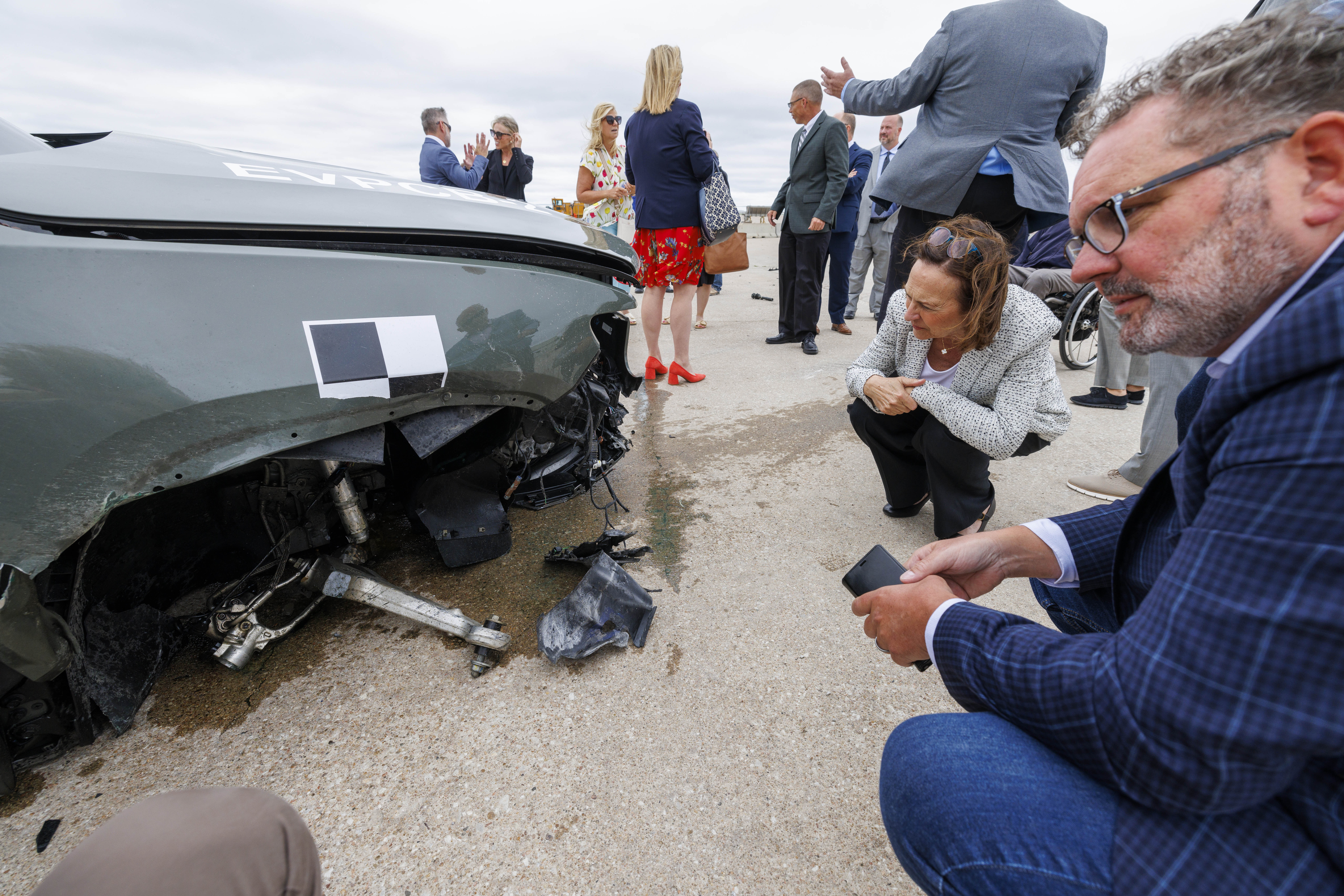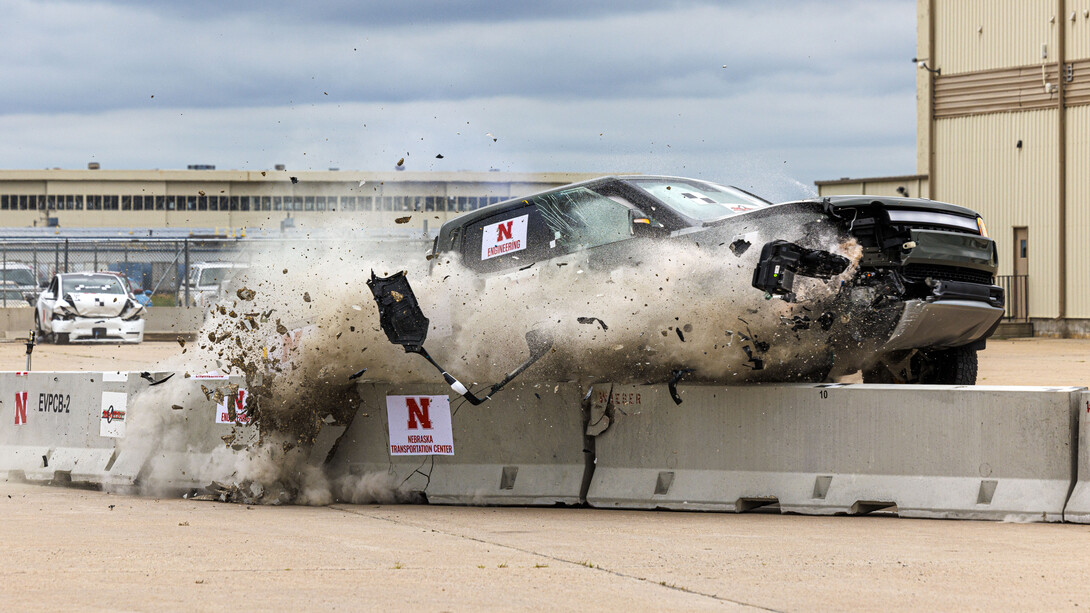
New results from a crash test using an electric 2022 Rivian R1T pickup truck raise more questions whether significant upgrades are needed to prepare the nation’s highways for rapidly increasing numbers of electric vehicles.
The July 1 test was the fourth electric vehicle crash test conducted by the Midwest Roadside Safety Facility at the University of Nebraska-Lincoln since September 2023. The tests aim to determine whether commonly used highway guardrails and traffic barriers can reduce the risk of injury and death when an electric vehicle leaves the road.

More than 19,000 people died in crashes where their vehicle left the roadway in 2023, according to early estimates from the National Highway Traffic Safety Administration. About half of all traffic fatalities occur in such crashes. Guardrails, median barriers and similar infrastructure items are designed to reduce the number and severity of such crashes by preventing vehicles from crossing medians and entering oncoming lanes of traffic, careening off bridges or pitching into ravines or down slopes.
All four tests have raised concerns whether current highway safety features — which are designed and tested for vehicles with internal combustion engines — will be sufficient as electric vehicles become more widely adopted.
“Historically, there has not been any testing of electric vehicles with roadside barriers — what works, how the vehicles behave and how the barrier systems interact with the vehicle,” said Cody Stolle, lead investigator for electric vehicle crash tests for the Midwest Roadside Safety Facility.
One of only three public highway safety research laboratories in the U.S., the Nebraska facility was the first to begin testing electric vehicles against guardrails. Only one EV test against guardrails has been conducted outside Nebraska.
EV sales have grown steadily in the U.S. since 2020, hitting 1.6 million in 2023, a 60% increase from the previous year. To meet recently imposed limits on tailpipe emissions, the Environmental Protection Agency estimates that by 2032 more than half of new cars sold each year will have to be electric. Because of their large battery packs, EVs tend to be significantly heavier with lower centers of gravity than their internal combustion engine counterparts. That increases the available kinetic energy that must be managed, forces experienced during the crash and the way vehicles deflect from barriers.
During a roundtable discussion of the issue earlier this month at the University of Nebraska–Lincoln, government transportation officials questioned whether the U.S. can identify needed changes, update its standards and improve its highway infrastructure in time to meet the challenges created by EVs.
“This is all in the midst of aging infrastructure, in which each state is trying to keep up and figure out how they invest in infrastructure improvements just based on what they currently know — and not keeping up with what’s in the future,” said Jennifer Homendy, chair of the National Transportation Safety Board. “I just feel like it’s going to be a catch-up on everything and we’re going to be investigating what happens after the tragedy occurs.”
U.S. Sen. Deb Fischer invited Homendy to attend the event held at Kiewit Hall, UNL’s newly opened center for undergraduate engineering education. She applauded the Nebraska researchers for investigating the significant challenges the country faces to prepare its roadways for heavy EV usage.
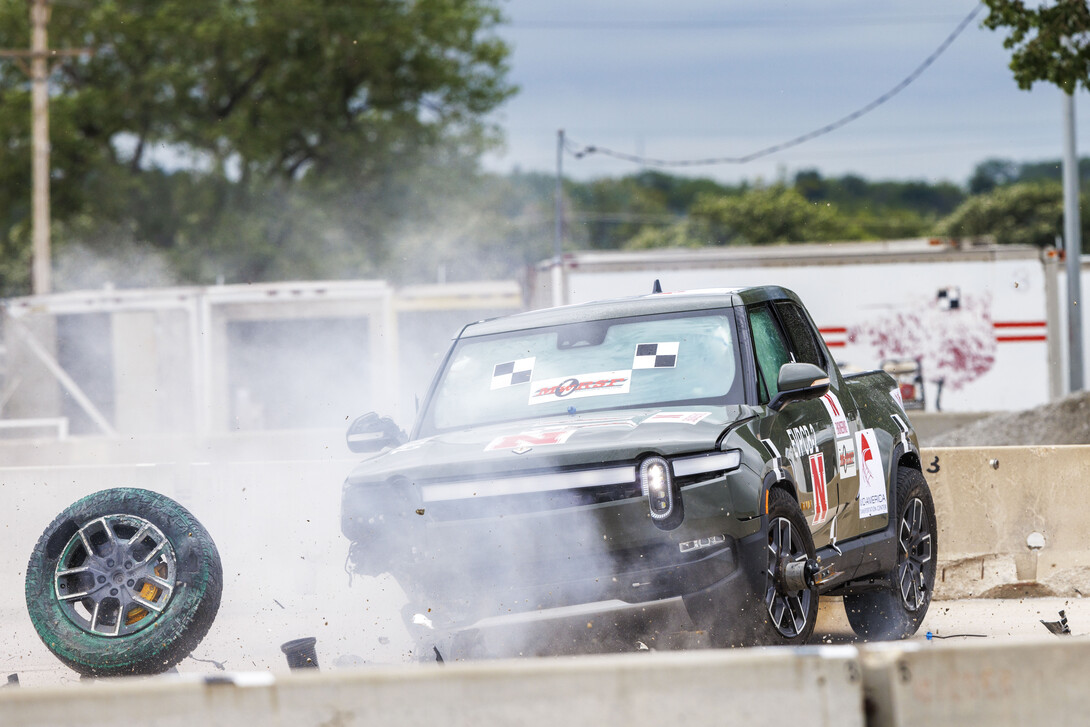
“There’s huge ramifications across the board,” Fischer said. “It’s very important that we take it seriously and continue to try to find solutions.”
Fischer previously pointed to UNL’s leading-edge research on electric vehicles and roadside safety infrastructure during a hearing of the Senate Commerce, Science and Transportation Committee, of which she is a member.
During the July 1 crash test, held in conjunction with the roundtable event, the 7,000-pound pickup truck, traveling at 62 mph, crashed into a 16-segment portable concrete barrier of the type commonly used as freeway median barriers or to shield highway construction workers from ongoing traffic. Except for substituting the Rivian for the 5,000-pound Dodge Quadcab truck typically prescribed, the exercise complied with all requirements specified in the Manual for Assessing Safety Hardware, the American Association of Highway and Transportation Officials guidebook for crash testing highway safety features. The Rivian struck the barrier at a 25-degree angle.
The purpose of the test, according to Ronald Faller, director of the Midwest Roadside Safety Facility, was to “investigate the ability of the portable concrete barrier system, commonly used in highway construction zones, to safely contain and redirect the heavier EV with controlled lateral barrier displacements.” Non-instrumented crash dummies were placed in the cab to assess risk to occupants.
After analyzing data, the Nebraska engineers concluded that the Rivian passed the test based on standardized criteria for occupant risk and vehicle containment. The vehicle was contained and redirected by the 32-inch-high barrier, while the occupant compartment remained intact. Acceleration forces and estimated speed were within acceptable limits for the dummies inside the compartment, Stolle said.
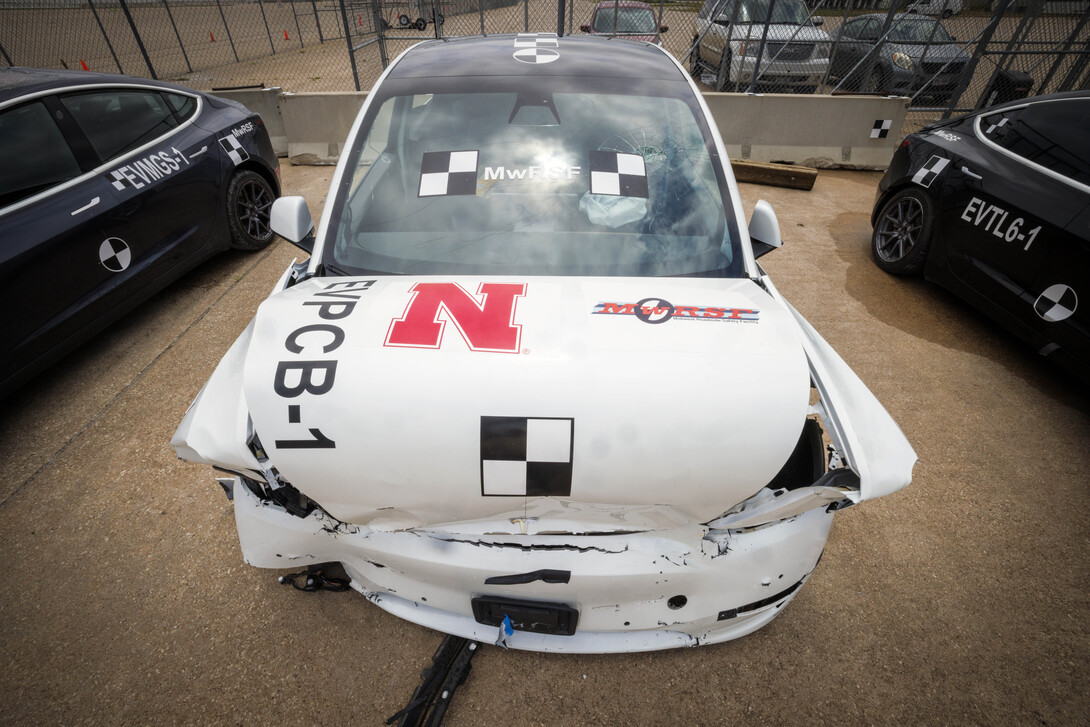
“The occupants likely would have survived and been OK,” he said.
However, the barrier suffered catastrophic damage, sending chunks of concrete flying and rupturing numerous steel reinforcing bars. Several segments – each weighing about 5,000 pounds — were pushed back more than 10 feet. That’s 50% higher than the typical displacement distance, Stolle said.
“Anybody on the back side of that barrier could have been pushed off the side of a bridge,” Stolle said. “It’s not safe for workers and work zones and not very practical for departments of transportation.”
Three previous crash tests conducted by the Midwest Roadside Safety Facility also produced concerning results whether commonly used highway safety infrastructure is adequate for EVs.
In October 2023, a 2022 Rivian R1T truck tore through a 31-inch-high guardrail system made of 12-gauge corrugated steel. In a separate test in September 2023, a 2018 Tesla Model 3 lifted a similar barrier and passed below it. In March 2024, although a 62-inch-tall, high-performance concrete barrier safely contained a 2018 Tesla Model 3 sedan, the vehicle accelerations were higher than federal standards for roadside hardware. After colliding with the barrier, the back end of the car swung and hit the barrier more than 50% harder than similar gasoline vehicles. The test was analyzed by Tesla engineers, who determined that the side curtain airbags, which were disabled during the test, likely would have significantly reduced the risk of injury to occupants compared to the as-tested condition.
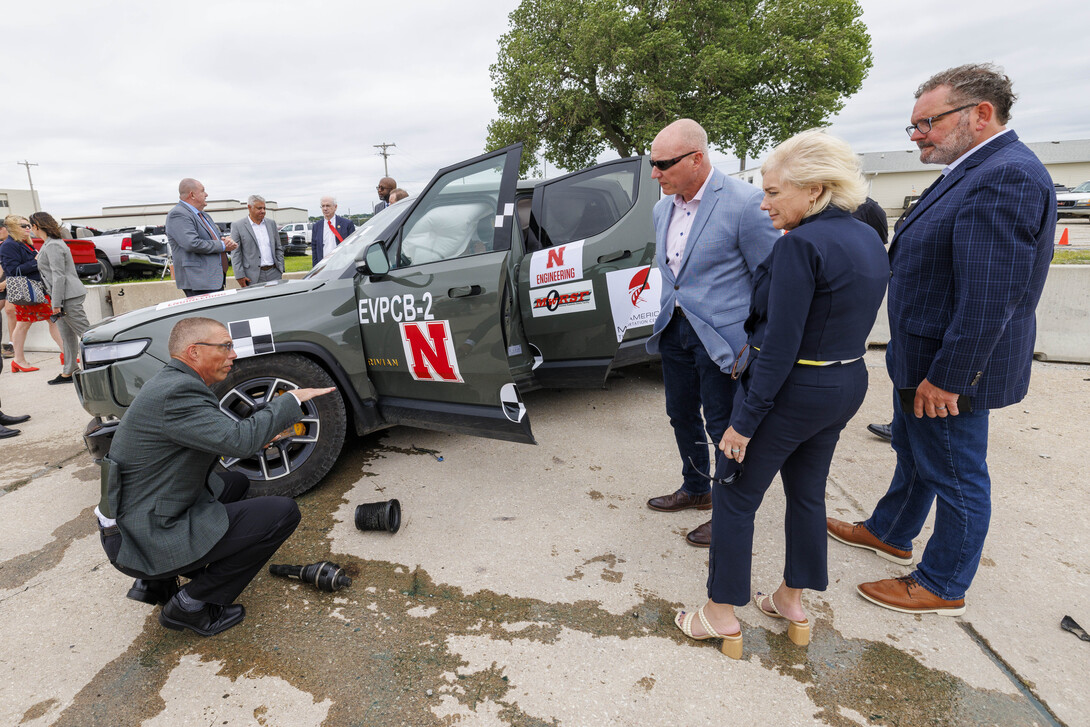
The Nebraska engineers are working closely with state Departments of Transportation, leading highway safety research organizations and highway safety equipment manufacturers to draw attention to the issue. They also are trying to build partnerships with EV manufacturers.
“When I present our research at conferences, one of the questions I often get is ‘Are electric vehicles unsafe?’” said Bob Bielenberg, a research engineer with the Midwest Roadside Safety Facility. “I don’t think that’s really a fair perspective.”
Electric vehicles fare well in the government’s New Car Assessment Program and the crash worthy ratings from the Insurance Institute for Highway Safety, which examine how the cars perform in collisions with other vehicles. The Midwest Roadside Safety Facility tests, however, evaluate how safety devices perform when a car unintentionally leaves its traffic lane for reasons like driver distraction or sleepiness, mechanical problems or medical problems, often referred to as “errant” crashes.
“When you look at their IIHS testing, many EVs are very safe,” Bielenberg said. “Our research is an aspect of safety that the auto industry might not be super cognizant of. They know guardrails are out there, but they don’t necessarily understand how their vehicles interact with them. Making them aware is the first step, in my mind.”
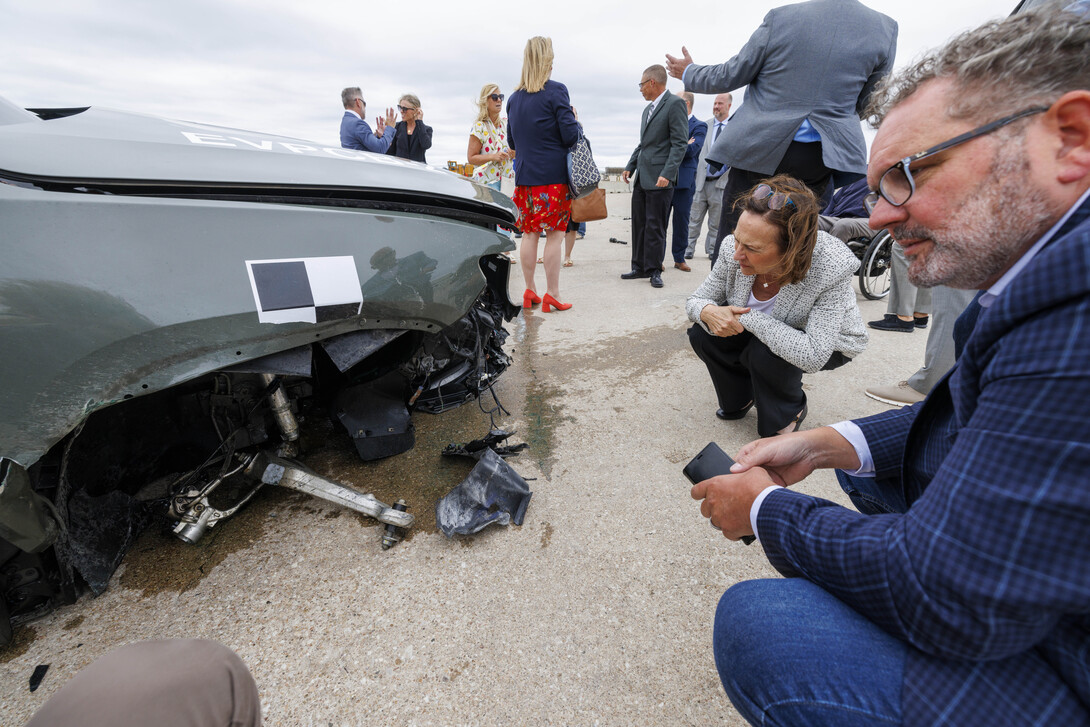
Share
News Release Contact(s)
Related Links
Tags
High Resolution Photos
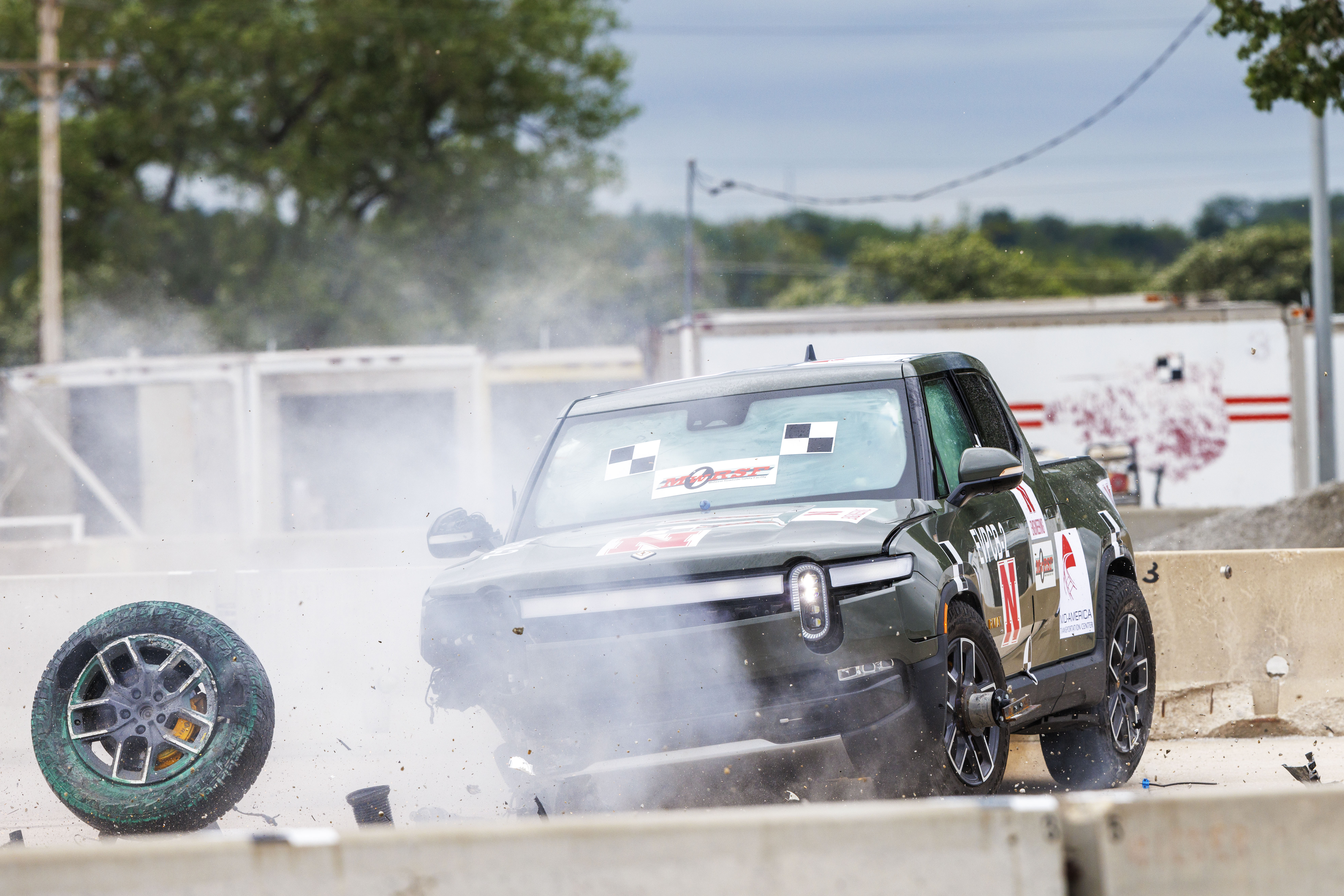
HIGH RESOLUTION PHOTOS
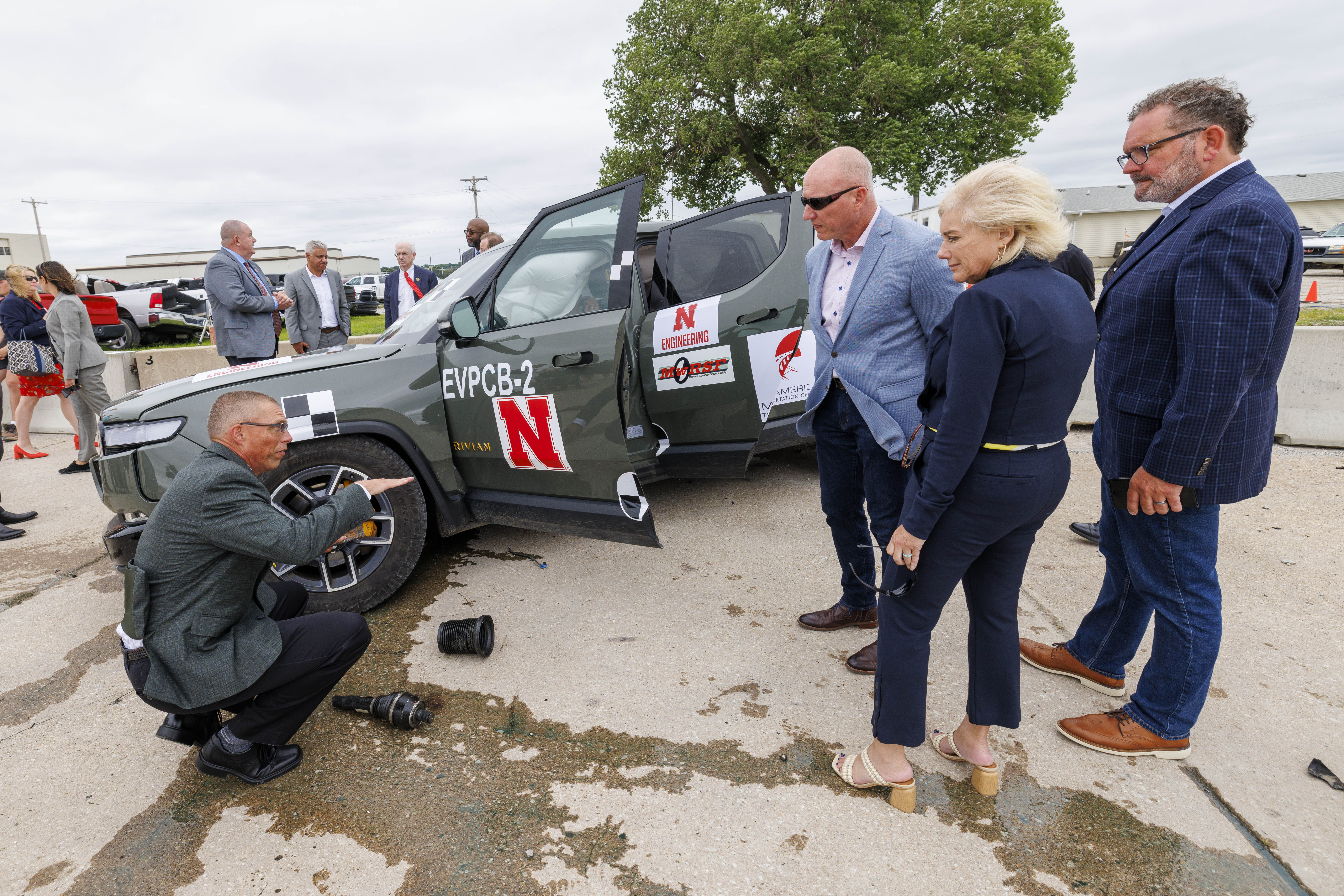
HIGH RESOLUTION PHOTOS
